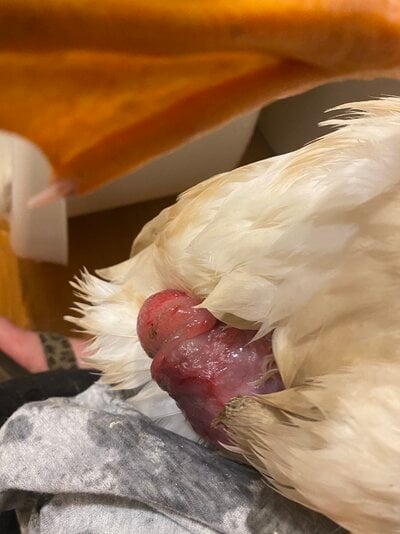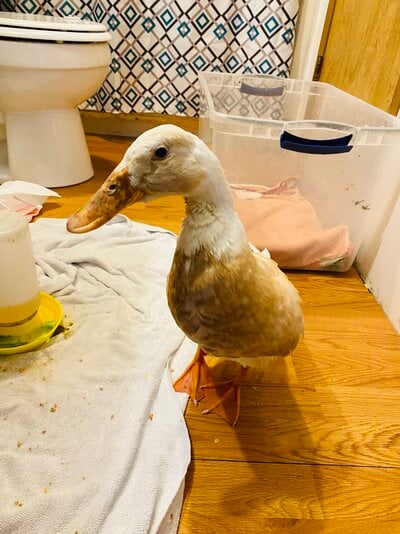Hey there- I have a female Indian Runner duck (unsure of age, she was a rescue) who has a vent prolapse that developed yesterday. We’ve let her soak in warmish epsom water, used vetericyn to keep it clean, kept her in a quiet dark area, and tried putting the prolapse back in. We get it back in, but she pushes it back out again. Today, we also noticed white calcium-like crystals around her vent and there is also a small solid mass hanging out (about the size of a large grape). I’m not sure what to do. I want so badly to save her but I know she’s in pain. Please any advice on what to do or how to keep everything in or what this mass could be, would be appreciated. Thank you
Attached photo is from yesterday before any treatment. The amount she pushes back out now is much smaller…and pretty much only the mass.
Attached photo is from yesterday before any treatment. The amount she pushes back out now is much smaller…and pretty much only the mass.



